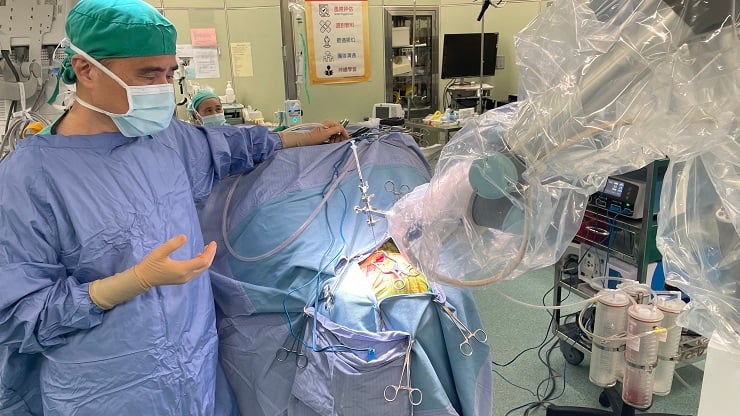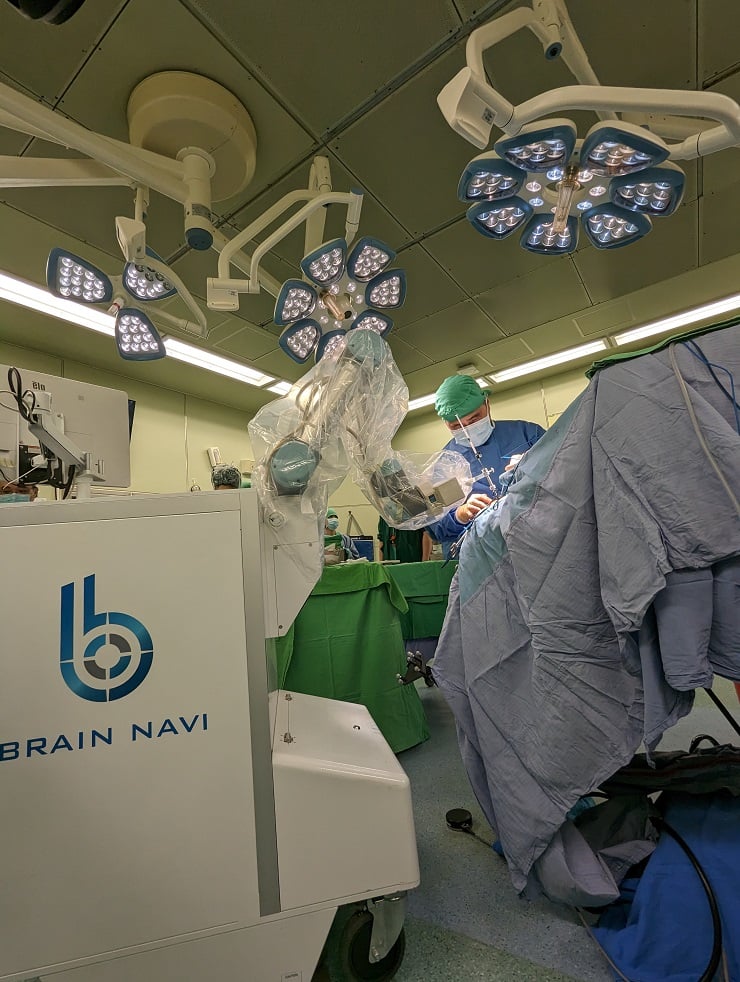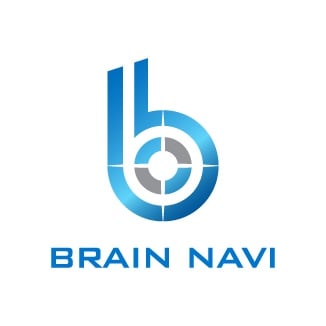
Stem cell therapy is a promising medical treatment in the field of regenerative medicine. The therapy involves generating healthy cells to replace the cells affected by diseases. Spinocerebellar ataxia (SCA) is a degenerative condition that affects coordination and movement, including the eyes, hands, legs, mobility, and speech. It primarily impacts the cerebellum, a crucial part of the brain responsible for physical movement coordination. Today, there is no cure for SCA, but some neurosurgical experts believe that stem cell therapy might offer “hope” to SCA patients.
In this interview, we have invited two experts in stem cell therapy, Dr. Lin (Shinn-Zong) and Dr. Chiu (Tsung-Lang), to share their ideas and experiences regarding the application of NaoTrac in facilitating stem cell implantation into the cerebellar peduncle area in the prone position.
Introduction of M.D., Ph.D., CPI Shinn-Zong, Lin
Prof. Dr. Shinn-Zong Lin is the superintendent of Hualien Tzu-Chi Medical Center from Taiwan. He devotes his medical experience to neurosurgery studies, such as Neuroscience, Stem Cell Therapies, Translational Science, New Drug Development, and Hospital Management. He is also a fellow of AAAS (American Association for the Advancement of Science), an International Fellow of AANS (American Association of Neurological Surgery), the charter fellow of NAI (National Academy of Inventors) in the USA, and the chairman of the 10th Pan Pacific Symposium on Stem Cells and Cancer Research.
Introduction of Dr. Tsung Lang, Chiu
Dr. Tsung Lang, Chiu is the chief of the neuro-medical scientific center at Hualien Tzu-Chi Medical Center. He is a specialist in cerebrovascular disease (stroke), brain tumors, and stereotactic surgery. He is an expert in brain tumor surgery, targeted therapy of brain tumors, and immunotherapy; stem cell therapy such as ischemic stroke, hemorrhagic stroke, and spinal cord; injury intractable neuropathic pain for spinal cord injury, stroke sequelae, and peripheral nerve disorders. Dr. Chiu is the first neurosurgeon worldwide to use NaoTrac, the surgical navigation robot, with applications such as EVD, biopsy, and cell-implantation.
Q: Why is cell implantation important for a patient with spinocerebellar ataxia?
Ph.D. Dr. Lin:
Cell implantation is being explored as a potential treatment for patients with SCA (spinocerebellar ataxia), as a way to replace the lost cells caused by the disease. This treatment is referred to as ‘compassionate use.’ There is currently no cure for SCA (spinocerebellar ataxia); however, at Hua-Lien Tzu-Chi Medical Center, we provide “hope” to patients and their families by offering them another chance to recover and be healthy again through the technology of cell implantation.
Q: Dr. Chiu is the first pioneer to facilitate the NaoTrac in neurosurgery, what application did you apply previously and how was your experience?
Dr. Chiu:
I am Dr. Tsung-Lang Chiu, a neurosurgeon at the Neuro-Medical Scientific Center at Hualien Tzu-Chi Medical Center. Since 2018, I have been using NaoTrac for neurosurgical procedures. The first clinical application involved External Ventricular Drainage (EVD), a procedure used to drain cerebrospinal fluid in patients with hydrocephalus. EVD is a common neurosurgical practice, but complications such as malposition and malfunction of the catheter, brain tissue damage, and vascular injury are not uncommon. These complications often arise from repeated punctures. Research suggests that approximately 40% of EVD procedures require multiple punctures when performed manually, resulting in a hemorrhagic rate of 18 to 40%. By using NaoTrac, the success rate of the first puncture was 92.8%, significantly higher than the 60% success rate with manual procedures. Immediate post-surgery CT scans showed no cases of intracranial hemorrhage when using NaoTrac. Therefore, we can conclude that NaoTrac is effective and safe in catheter placement. I have published a medical journal article on this topic in Acta Neurochirurgica. Feel free to take a look here if you’re interested. Apart from EVD, we also perform other applications, such as brain tumor biopsies and ICH procedures, on a weekly basis in Taiwan.

Q: What is the condition of the patient with spinocerebellar ataxia?
Dr. Chiu:
Spinocerebellar ataxias are progressive, devastating disorders of movement coordination, which are mostly characterized with slurred speech, difficulty swallowing, double vision, action tremor, rigidity, dysfunction of the bladder and bowel, cognitive decline, and so on. Currently, there are no FDA-approved effective treatments for spinocerebellar ataxia. However, increasing clinical trials for spinocerebellar ataxia are ongoing, which include non-invasive neurostimulation, genetic and epigenetic approaches, symptomatic medication, and stem cell-based therapies.
Q: Why did the patient accept this cell implantation therapy?
Dr. Chiu:
Our patient is a 41-year-old female who has experienced progressive rigidity, action tremors, and difficulty swallowing for years. She had previously participated in clinical trials involving medications and neurostimulation, which did not alleviate or halt her symptoms. Drawing from our experience with stem cell implantation therapy for chronic stroke patients, who achieved significant improvements in their motor functions and daily activities, we initiated a compassionate trial of stem cell implantation therapy for this spinocerebellar ataxia patient.
Q: What is the difference between traditional cell implantation and using NaoTrac, the surgical Navigation Robot?
Dr. Chiu:
The most significant difference between traditional surgery and NaoTrac is that NaoTrac allows for surgeries to be performed in a prone position, preserving all precious stem cells. This unique solution sets NaoTrac apart, as few navigation systems can operate in this position. Compared to traditional surgery using a stereotactic frame, which normally takes approximately 2-4 hours to complete the procedures, cell implantation with NaoTrac can be performed in just 1-1.5 hours, reducing the risk associated with anaesthesia time. This time-saving advantage is significant and sets NaoTrac apart from other surgical methods.
Q: How did the patient recover? Did they require any rehabilitation?
Dr. Chiu:
After the stem cell implantation, she continued with the daily rehabilitation. During the 12-month observation, she did not gain obvious improvement, but there is no progression of her clinical manifestation either. The compassionate treatment provided an additional potential solution for the patient. We were delighted with the surgical procedure in terms of time-saving, precision, and keeping the stem cells within the target area of the brain. That gave the study a valuable figure in stem cell therapy.

Q: What is the potential therapy that can be applied in your stem-cell therapy with NaoTrac in the future?
Ph.D. Lin:
I have seen a very high potential of NaoTrac that gives the neurosurgeon more flexibility in surgical application. In the fields of immunotherapy, cell transplant, microchip implantation, etc., a high degree of accuracy is required. Therefore, NaoTrac not only executes in brain tumor resection or the current application, but it also has the potential to collaborate with further fields.









